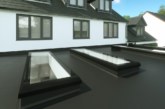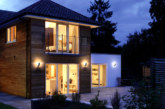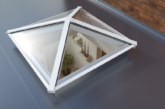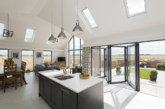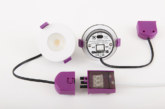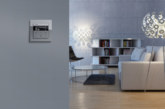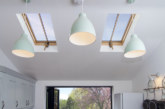
Christian Schiemann, Product Marketing Manager for Wiring Accessories at ABB, outlines how homes can be made smarter and looks at the potential benefits of home automation solutions.
Until recently, most people assumed home automation systems could only be afforded by the wealthy. Smart home technology, also known as home automation, is a term for systems that control any combination of lighting, blinds, curtains, heating and door security. Installation of this technology used to need a specialist contractor for a bespoke system.
However, home automation technology is fast becoming more prevalent in residential properties and particularly new homes. There are two reasons for this trend. First, people expect more control and interaction with the world around them thanks to smartphones.
Second, developments in installation technology have made home automation systems cheaper, and therefore more accessible to home owners. Digital research agency, BI Intelligence, predicts factors like these will help the home automation market grow from $61 billion in 2014 to $490 billion by 2019.
Home automation as standard
Some housebuilders in Europe have started to install home automation as standard in new build developments. This is possible because of the simplicity of the latest generation of home automation systems, which are simple for electrical contractors to learn and use.
One example of such a system is ABB-free@home which can control lights, blinds, heating and door security through a smartphone or tablet app.
Home buyers can benefit from enhanced control of lighting, heating, curtains or blinds and door control. One aspect is that they will have the bragging rights of having a home with touch control. Energy conscious people will be able to keep an eye on the temperature when they’re out and about, offsetting the purchase cost.
Security is another key benefit of free@home as it can automatically switch lights on and off so that an empty house looks occupied, putting off potential burglars. Adding a door camera will enable home owners to see who is at the door – from the app. Plus, in the event of a fire alarm at night, it can automatically turn the lights on to help occupants investigate or escape.
Straightforward installation
Crucially, free@home is easy for electrical installers to set up, keeping the cost down for home owners. For example, 12 lighting circuits, room thermostats, radiators, four curtain or blind actuators and video door communication, enough for a typical three-bedroom house, would cost less than £4,500. Plus, being supplied by ABB, customers can be assured of a reliable distribution network for products, as well as free training workshops and e-learning to ensure installers have the support in learning new skills.
It takes just a few hours for an electrical contractor to learn how to install and commission the free@home system in new build houses or properties that are being re-wired – but wireless sensors and actuators will soon be added to the range for retrofit or extension to existing systems.
Set up is in three stages, the first being installation of the hardware alongside wiring. The components can be installed in almost any order or combination such as series, star or tree structure.
Second, the system is commissioned using a web or mobile app that connects the main controller, known as a system access point, to the sensors and actuators. The app then guides the contractor through a process of setting up a floor plan and matching sensors and actuators to their locations on the plan.
The final stage is setting the levels and timers so the connected components (lighting, blinds, heating and door security) are activated when required. The levels can then be controlled individually, or pre-set in scenes such as “everything off”, “morning routine” or “TV time”.
Future developments
As the market develops, there are great plans to add new features and capabilities. One example is gesture commands. For example, turning lights on and off by opening and closing your hand. Taking this further, sensors will be able to track people inside the property and adjust the climate accordingly. This can be adapted based on the number of people in the room.
Another development is smart storage combined with solar panels. Home owners can store solar energy to be used when required. For example, the dishwasher can be set in the morning but the cycle will only start when enough solar energy has been generated so there is no need to use mains power.
But whichever way home automation develops, it is set to grow in popularity and offers a new way for developers to attract the attention of home buyers.


